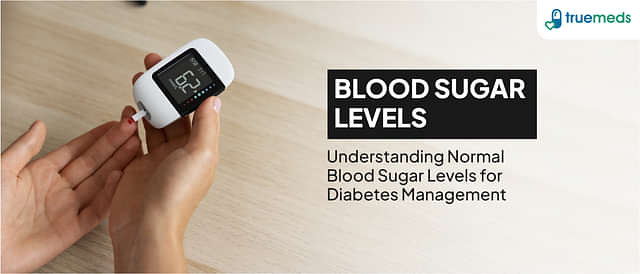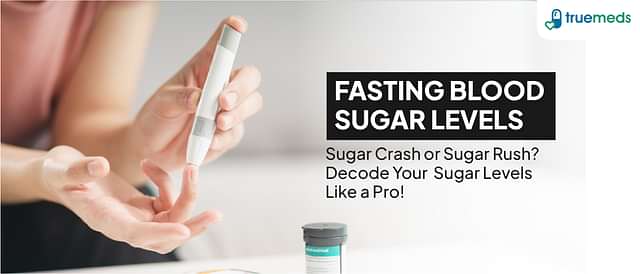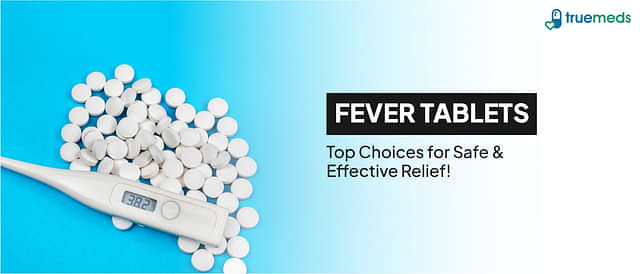Basic Tips To Use Insulin
Last updated on : 12 May, 2025
Read time : 8 min
Using insulin can feel overwhelming at first, especially if you’re newly diagnosed with diabetes. But with the right knowledge and a few simple tips, managing insulin becomes easier and safer. This blog will guide you through basic tips on using insulin correctly, including how to store it, when to take it, and how to inject it properly. Understanding these basics will help keep your blood sugar levels steady and support your overall health with more confidence and less stress.
What is Insulin?
Insulin is a hormone that is secreted by the pancreas that is present below the stomach. The pancreas releases insulin into the bloodstream, circulates, and lets the sugar enter the cells. It is how insulin helps lower the amount of sugar in the bloodstream. As the blood sugar level starts dropping, insulin secretion from the pancreas decreases.
If you have type 1 diabetes, your body is not making any insulin, so you need to start insulin therapy immediately. This therapy tries to mimic natural insulin or non-diabetic insulin secretion.
In the case of type 2 diabetes, you can manage your diabetes with healthy eating and physical activities. Your doctor may prescribe medications such as insulin, injectable medications, or oral medicines to help control your blood glucose.
Most importantly, you need to eat healthily and remain active if you take insulin or other medicines for diabetes. Before knowing the basic tips on insulin use, one must know the types and modes of insulin commonly used.
The Importance of Insulin
Insulin is a vital hormone produced by the pancreas that helps regulate blood sugar levels. It allows cells to absorb glucose from the bloodstream for energy or storage, keeping blood sugar levels stable. Without sufficient insulin, blood sugar can rise to dangerous levels, leading to conditions like diabetes. For people with diabetes, taking insulin is essential to manage their blood sugar and prevent complications such as heart disease, kidney damage, and nerve problems. In essence, insulin is crucial for maintaining overall health and energy balance in the body.
What are the Types of Insulin?
3 Types of insulin commonly used are:
1. Rapid-Acting Insulin
It quickly absorbs in your bloodstream and controls the blood sugar during meals and snacks to balance high blood sugar.
2. Intermediate-Acting
It is absorbed slowly but lasts longer to control the blood sugar overnight while fasting and between meals.
3. Long-Lasting Acting
Is absorbed slowly and lasts a day to control the blood sugar overnight while fasting and between meals.
What are the Modes of Taking Insulin?
4 standard modes of taking insulin are:
- Syringe
- Insulin pen
- Insulin Pump
- Insulin Inhaler
The ultimate aim of insulin therapy is to restore normal insulin levels in your blood. Insulin therapy for type 1 diabetes involves injecting insulin or using an insulin pump. While for type 2 diabetes, injectable medications are recommended if oral medications are ineffective.
Basic Tips on the Use of Insulin for People with Diabetes
1. Monitor Blood Glucose and Set Goals
- Track your blood sugar levels regularly.
- Set specific targets for pre-meal, bedtime, and low blood glucose situations.
2. Manage Carbohydrate Intake
- Monitor your carb consumption daily.
- Consult a dietician or nutritionist for carb calculation and planning.
3. Understand Insulin Dosage and Types
- Learn the correct insulin dose, type, and formulation before use.
- Adjust insulin at meals based on carb intake. One unit of rapid-acting insulin typically covers 12–15g of carbs, but this may vary.
4. Safe Injection Practices
- Disinfect skin only when visibly dirty.
- Apply pressure, not rubbing, if blood or insulin appears at the injection site.
- Never share needles, syringes, or insulin cartridges.
5. Timing and Injection Site Tips
- Avoid injecting insulin immediately after exercise or smoking.
- Choose non-active areas like the abdomen for consistent absorption.
6. Insulin Pump Safety
- Remove the pump before body scans like X-rays, CT, or MRI.
- Disconnect during water activities or showers.
- Avoid direct skin contact with the pump buttons to reduce moisture exposure.
7. Inhaled Insulin Guidelines
- Avoid use if you smoke or have lung diseases like asthma or COPD.
- Sip water before and after inhalation to prevent throat irritation.
8. Stay Updated with New Insulin Options
- New insulin formulations and delivery systems are introduced regularly.
- Discuss changes with your doctor to optimise treatment.
9. Balance Is Key in Diabetes Management
- Coordinate insulin use with your diet and daily activity.
- Poor adherence can lead to unstable blood sugar and serious complications.
Managing and treating your diabetes include maintaining the proper balance between insulin dosage, eating habits, and daily physical activity. If you are unaware or don’t follow your treatment seriously, your blood sugar levels will become unmanageable, which can lead to complications.
How Should I Store My Insulin?
To store your insulin properly, keep unopened insulin vials or pens in the refrigerator at a temperature between 36°F and 46°F (2°C to 8°C). Once opened, insulin can be kept at room temperature (below 86°F or 30°C) for up to 28 days. Avoid exposing insulin to direct sunlight or extreme heat, as it can spoil. Never freeze insulin, and always check the expiration date before use. If traveling, use an insulated bag with ice packs to keep the insulin cool. Proper storage ensures insulin remains effective and safe to use.
Side Effects and Reactions of Insulin
Insulin is a vital medication for managing diabetes, but it can have side effects and reactions. Common side effects include low blood sugar (hypoglycemia), which can cause symptoms like shaking, sweating, dizziness, and confusion. To prevent this, it’s essential to monitor blood sugar levels regularly and follow dosing instructions.
Other side effects may include weight gain and skin reactions at the injection site, such as redness, swelling, or itching. In rare cases, insulin can cause allergic reactions, which may present as a rash, trouble breathing, or swelling in different body parts.
Some people might experience lipodystrophy, where the fat tissue under the skin becomes thick or lumpy from repeated injections in the same area. To minimize this, it’s advised to rotate injection sites. Always consult with a healthcare provider to manage any side effects or reactions effectively.
Disclaimer: The information given in this article is accurate to our best knowledge. Still, we recommend you consult your healthcare professional before taking insulin to manage your diabetes.
Frequently Asked Questions (FAQs)
Insulin is used to manage blood sugar levels in people with diabetes. It helps prevent complications by lowering glucose in the blood, especially in type 1 diabetes and sometimes in type 2 when other treatments are not enough.
The main function of insulin is to help glucose from food enter the body’s cells, where it’s used for energy. It also regulates blood sugar levels and supports fat and protein metabolism in the body.
The 3-hour rule means waiting at least three hours after taking rapid-acting insulin before taking another dose. This avoids “insulin stacking,” which can cause dangerously low blood sugar by overlapping the effects of multiple doses.
The best time to take insulin depends on the type. Your doctor will suggest the best time to take insulin based on your case.
Yes, insulin can cause side effects like low blood sugar (hypoglycemia), weight gain, and injection site reactions. Rarely, allergic reactions or swelling may occur. Regular monitoring and correct dosing help reduce the risk of side effects.
Insulin needs vary based on age, weight, activity, and type of diabetes. Your doctor will decide on the starting dose. Follow the directions accordingly.
Insulin becomes easy to use with practice. With modern insulin pens, fine needles, and clear instructions, most people can self-inject comfortably. Learning the right technique and timing makes daily use safe and manageable over time.
Disclaimer
Our healthcare experts have carefully reviewed and compiled the information presented here to ensure accuracy and trustworthiness. It is important to note that this information serves as a general overview of the topic and is for informational purposes only. It is not intended to diagnose, prevent, or cure any health problem. This page does not establish a doctor-patient relationship, nor does it replace the advice or consultation of a registered medical practitioner. We recommend seeking guidance from your registered medical practitioner for any questions or concerns regarding your medical condition.
Popular Articles
Recent Articles
Top-Selling Medicines:
...View more
Top-Selling OTC:
...View more
Company
About UsHealth ArticleHealth StoriesDiseases & Health ConditionsAyurvedaAll MedicinesAll BrandsNeed HelpFAQSubscribe
Registered Office Address
Grievance Officer
Download Truemeds

Contact Us
Our customer representative team is available 7 days a week from 9 am - 9 pm.
v3.7.31
2025 - Truemeds | All rights reserved. Our content is for informational purposes only. See additional information.
Our Payment Partners









































